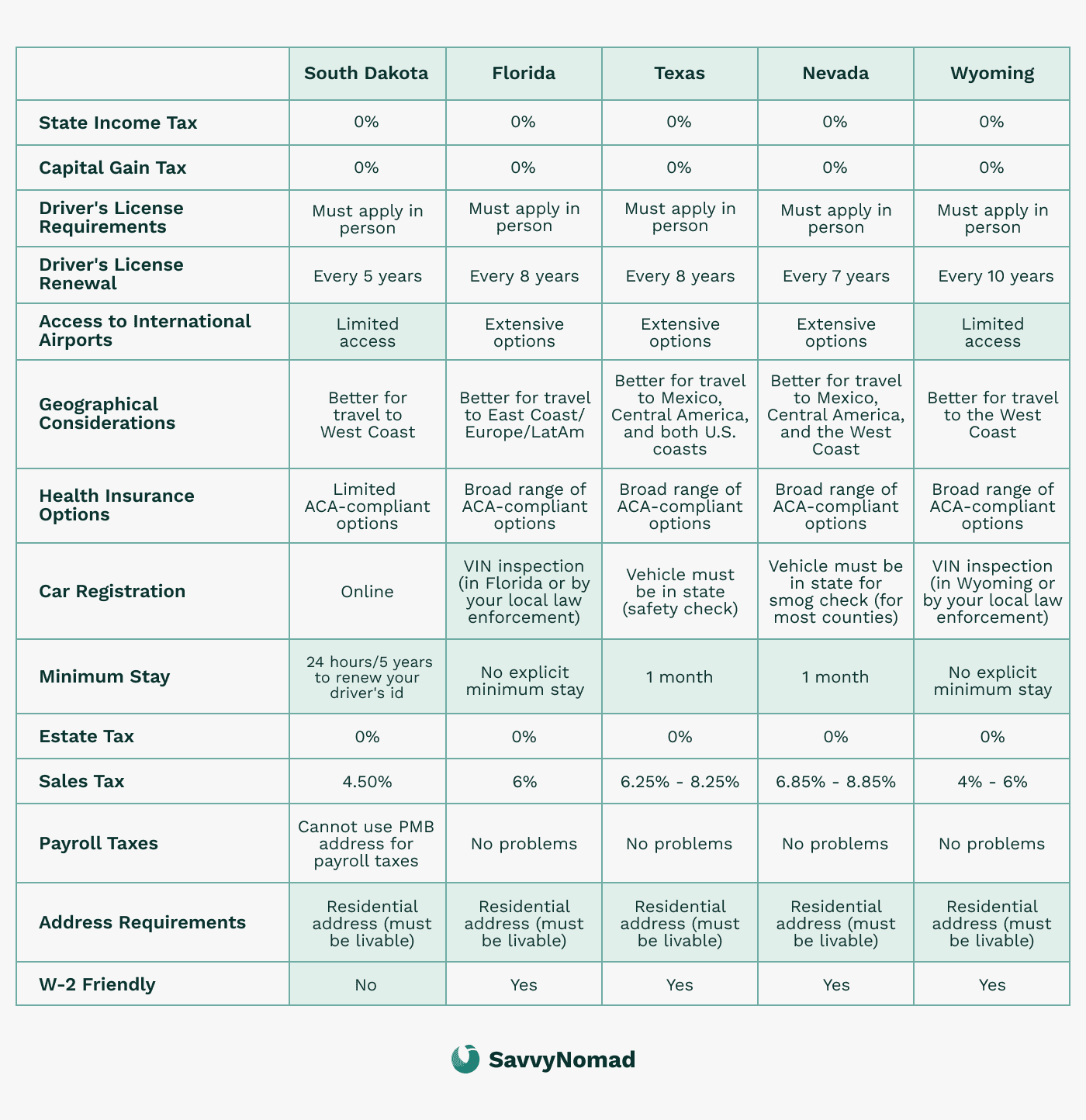Guide to U.S. expat taxes in Mexico

Living in Mexico as a U.S. citizen offers new experiences, but it also involves important tax responsibilities. The IRS requires you to keep up with your U.S. tax obligations, even while abroad.
This guide will help you understand and manage these requirements, including reporting worldwide income, claiming expat exclusions and credits, and navigating extra reporting obligations like FATCA and FBAR.
We'll also discuss your ties to a U.S. state for tax purposes and how the U.S.-Mexico tax treaty can prevent double taxation.
U.S. federal tax obligations for expats
As a U.S. citizen living in Mexico, the IRS still expects you to report your income, even though you’re outside the U.S. This might sound surprising, but the U.S. is one of the few countries that taxes its citizens on worldwide income, no matter where they live. Here’s what you need to know to stay on top of your federal tax obligations while living in Mexico.
For U.S. tax purposes, you’re required to report all income you earn globally. This includes income from a job in Mexico, freelance work, or even income from U.S.-based investments. If you meet the income thresholds set by the IRS, you’ll need to file a federal tax return, just like you would if you were still living in the U.S.
Filing requirements and thresholds
The filing threshold for expats varies based on your income and filing status (single, married, etc.). For instance, if you’re under 65 and file as “single,” you’ll need to file if your income is over $12,950 (for the tax year 2023). The IRS updates these amounts each year, so it’s always a good idea to double-check the current requirements.
Key tax exclusions and credits
The U.S. tax code offers several ways to help reduce or eliminate the taxes you owe on income earned abroad. These include the Foreign Earned Income Exclusion (FEIE), the Foreign Tax Credit (FTC), and the Foreign Housing Exclusion.
Foreign Earned Income Exclusion (FEIE)
The FEIE lets you exclude a certain amount of your foreign-earned income from U.S. taxes, which can be a big help if you earn most or all of your income in Mexico. For 2023, this exclusion amount is up to $126,500. To qualify, you’ll need to meet one of these two tests:
- Physical Presence Test: You’ve spent at least 330 full days outside the U.S. in a 12-month period.
- Bona Fide Residence Test: You’ve been a resident of another country (like Mexico) for a full tax year and plan to continue living abroad.
To claim the FEIE, you’ll need to file Form 2555 with your tax return.

Foreign Tax Credit (FTC)
If you pay income taxes to Mexico, you may be eligible to claim the Foreign Tax Credit, which can help offset your U.S. tax liability. The FTC is especially useful if you’re paying higher tax rates in Mexico, as it can reduce the risk of being taxed twice on the same income. You’ll use Form 1116 to claim this credit.

Foreign Housing Exclusion
The Foreign Housing Exclusion allows you to deduct certain housing costs from your taxable income. This can include rent, utilities, and other reasonable housing expenses. The exclusion amount depends on the cost of living in your area and is capped, so it’s good to review the specific limits when calculating this benefit. The Foreign Housing Exclusion is also claimed on Form 2555.

State tax obligations for the U.S. expats
Even after moving abroad, U.S. citizens may still face state income tax obligations depending on their previous state’s residency rules. Some states, such as California and New York, have stringent guidelines and may continue taxing former residents unless they take steps to clearly establish domicile elsewhere.

For U.S. expats living in Mexico, understanding state tax obligations is essential to avoid unexpected tax liabilities. While some states have favorable tax policies for residents abroad, others impose taxes on worldwide income and may continue to tax expats based on their last state of domicile. Here’s a guide to U.S. states by tax treatment and what expats in Mexico need to know.

Understanding state residency and domicile
Each U.S. state has unique criteria for determining residency and domicile. While you may no longer physically live in your former state, it may still consider you a tax resident if you haven’t made an official change of domicile. States with strict tax residency rules, like California, New York, and Virginia, may impose ongoing tax obligations on income earned anywhere in the world unless you have clearly cut legal ties and established a new state of residency.
In states like these, moving abroad isn’t always enough to sever residency ties. These states typically consider factors like where you hold a driver’s license, register to vote, own property, and maintain financial or family ties. Without formally establishing domicile in a different state, you could be subject to state income tax even while living abroad.
States with no tax on worldwide income for non-residents
These states provide favorable tax treatment for expats, as they do not impose taxes on global income if you can establish non-resident status:
- Colorado
- Connecticut
- Delaware
- Massachusetts
- Minnesota
- Missouri
- North Dakota
- Oregon
- Pennsylvania
- Virginia
- West Virginia
Expats from these states may not need to take significant steps to maintain their non-resident status once they relocate. This group of states offers considerable savings by not taxing worldwide income, making them favorable options for expats.
States that tax worldwide income but offer FEIE
These states tax worldwide income but provide some relief to expats by allowing a Foreign Earned Income Exclusion (FEIE). For the 2024 tax year, the FEIE lets expats exclude up to $126,500 of foreign-earned income from state income tax.
- Arizona
- Georgia
- Idaho
- Illinois
- Indiana
- Iowa
- Kansas
- Kentucky
- Maine
- Michigan
- Ohio
- Oklahoma
- Rhode Island
- South Carolina
- Utah
- Vermont
While these states tax global income, expats can reduce their tax liability with the FEIE, which allows them to exclude a significant portion of their foreign earnings.
States that tax worldwide income with no FEIE
These states tax worldwide income but do not provide a Foreign Earned Income Exclusion, resulting in higher potential tax burdens for expats, as there is no mechanism to offset foreign-earned income:
- Arkansas
- Indiana
- Kentucky
- Louisiana
- Maine
- Maryland
- Mississippi
- Montana
- Nebraska
- New Mexico
- North Carolina
- Wisconsin
Expats domiciled in these states face more significant tax liabilities on their global income due to the lack of FEIE, which makes establishing domicile elsewhere more appealing.

States with the highest tax burden for expats
Some states impose the most stringent tax policies on expats, including high income tax rates and no exclusions for foreign-earned income. If you’re domiciled in one of these states, relocating your domicile to a more tax-friendly state can lead to substantial savings.
These states have high income tax rates and tax worldwide income with no exclusions, making them the least favorable for expats in terms of tax savings.

Steps to reduce state tax obligations
If you plan to avoid state tax obligations, especially from states that tax worldwide income without providing relief, consider these steps:
- Establish domicile in a tax-friendly state: Moving your official residence to a state with no income tax, like Florida, Nevada, Texas, or South Dakota, can significantly reduce your tax burden.
- Update official documents: Cancel voter registration, update your driver’s license, and transfer financial accounts to reflect your new domicile.
File a final tax return in your previous state: This signals the end of your tax residency and helps prevent future state tax liabilities.
Additional U.S. reporting requirements – FATCA and FBAR
For U.S. citizens living abroad, filing a tax return may not be the only reporting requirement. The IRS has additional rules that apply specifically to U.S. citizens with foreign bank accounts or significant financial assets abroad. Two of the main forms to be aware of are related to the Foreign Account Tax Compliance Act (FATCA) and the Foreign Bank Account Report (FBAR). While these forms may sound intimidating, they’re simply tools for the IRS to keep track of U.S. citizens’ overseas finances.
FATCA (Foreign Account Tax Compliance Act)
The Foreign Account Tax Compliance Act, or FATCA, was introduced to help the IRS prevent tax evasion by U.S. citizens using foreign accounts. FATCA requires U.S. taxpayers to report certain foreign assets to the IRS.
Here’s what you need to know about FATCA and its requirements:
Who needs to file under FATCA?
If you have foreign assets that exceed certain thresholds, you’ll need to report them on Form 8938, which is submitted along with your regular tax return. For single filers living abroad, the threshold is $200,000 on the last day of the tax year or $300,000 at any point during the year. For married couples filing jointly, the thresholds are doubled.
What needs to be reported?
Reportable assets under FATCA include foreign bank accounts, investment accounts, foreign stocks, and even certain pensions. Generally, any financial assets held outside the U.S. should be reviewed to determine if they need to be reported.
How to file FATCA (form 8938?
If you meet the reporting threshold, you’ll complete Form 8938 and submit it with your regular tax return (Form 1040). The form requires details like account numbers, maximum account values, and the financial institution’s location.

FBAR (Foreign Bank Account Report)
The Foreign Bank Account Report (FBAR) is another requirement for U.S. citizens with overseas accounts. While FATCA applies based on the value of financial assets, the FBAR requirement is specifically tied to foreign bank accounts. Here’s a breakdown:
Who needs to file FBAR?
If the combined balance of all your foreign bank accounts exceeds $10,000 at any point during the year, you’re required to file an FBAR. This rule applies even if you just temporarily crossed the $10,000 threshold. For instance, if you have two accounts—one with $5,000 and another with $6,000—you would need to file an FBAR, as the combined balance is over $10,000.
How to file the FBAR (fincen form 114)?
The FBAR is filed separately from your tax return and is submitted online through the Financial Crimes Enforcement Network (FinCEN). The form, FinCEN Form 114, requires you to report details about each foreign account, including the bank name, account number, and maximum balance during the year.
Important deadlines and penalties
The FBAR filing deadline is April 15, but there is an automatic extension until October 15 for those who miss the initial deadline. Be mindful of FBAR filing, as the penalties for not reporting eligible accounts can be severe, with fines starting at $10,000 for each unreported account.

Understanding the difference between FATCA and FBAR
While FATCA and FBAR both aim to provide the IRS with information about foreign financial accounts, they have distinct differences:
- Different thresholds: FATCA requires reporting if your foreign assets exceed $200,000 as a single filer, while FBAR applies if the total balance in all foreign accounts exceeds $10,000.
- Different filing locations: FATCA reporting (Form 8938) is filed with your federal tax return, whereas the FBAR is filed separately through FinCEN.
- Types of assets reported: FATCA requires reporting a broader range of foreign financial assets, while FBAR focuses only on foreign bank accounts.
Why do FATCA and FBAR matter for U.S. expats?
Failing to file FATCA and FBAR can result in significant penalties, so it’s essential to understand whether you’re required to report these assets. While it may seem like an extra step, filing these forms can help ensure compliance with IRS regulations and avoid unnecessary fines. If you have foreign bank accounts or financial assets, it’s a good idea to consult a tax professional to ensure you’re meeting all reporting requirements.
U.S.-Mexico double tax treaty for the U.S. citizens
The U.S.-Mexico Double Tax Treaty, established in 1993, was created to help U.S. citizens living in Mexico avoid double taxation on the same income by both the U.S. and Mexico. Below, we focus on the treaty provisions most relevant to U.S. citizens.
Relief from double taxation
One of the treaty’s primary benefits for U.S. citizens is the ability to claim the foreign tax credit to offset U.S. taxes with Mexican taxes paid on income earned in Mexico. This is especially beneficial if you’re paying higher tax rates in Mexico, as the foreign tax credit can reduce or even eliminate your U.S. tax liability on the same income.
Tax residency and tie-breaker rules
The treaty includes tie-breaker rules to help determine residency in cases where you might qualify as a resident of both the U.S. and Mexico. While you may meet the IRS criteria for U.S. tax purposes, the tie-breaker rules clarify which country has primary taxing rights, reducing complications around dual residency.
The savings clause
A unique aspect of the treaty is the savings clause, which allows the U.S. to continue taxing its citizens on their worldwide income, even if they reside in Mexico. This clause limits some treaty benefits, as U.S. citizens remain responsible for filing U.S. taxes regardless of where they live. However, the foreign tax credit and exclusions like the Foreign Earned Income Exclusion (FEIE) still provide ways to reduce the impact of dual taxation.
Exchange of information
The treaty includes an exchange of information provision, allowing the IRS and Mexican tax authorities to share taxpayer data. This cooperation helps enforce tax laws in both countries and ensures accurate reporting of cross-border income. U.S. citizens should be aware that any foreign accounts held in Mexico may be disclosed to the IRS.
U.S.-Mexico totalization agreement (social security agreement)
For U.S. citizens working in Mexico, Social Security contributions can become a bit complicated. Fortunately, the U.S.-Mexico Totalization Agreement (also known as the Social Security Agreement), signed in 2004, is designed to prevent dual Social Security taxation and ensure that U.S. citizens and residents working abroad don’t lose out on Social Security benefits.
This agreement is especially useful for expats who may otherwise find themselves required to pay into both U.S. and Mexican social security systems.
Purpose of the totalization agreement
The main goal of the U.S.-Mexico Totalization Agreement is to eliminate the need for U.S. citizens working in Mexico to pay into both countries’ social security systems at the same time. By doing so, the agreement prevents “double contributions” and helps expats retain eligibility for Social Security benefits.
Avoiding dual contributions
If you’re a U.S. citizen working in Mexico, the totalization agreement helps determine which country’s Social Security system you should contribute to, depending on where your work is “based.” Generally:
- If you are employed by the U.S.-based company and temporarily assigned to Mexico for five years or less, you will continue to pay into the U.S. Social Security system only.
- If your employment is permanent or you work for a Mexican company, you will likely pay into the Mexican Social Security system, called Instituto Mexicano del Seguro Social (IMSS), and be exempt from the U.S. Social Security contributions.
Combining social security credits
One of the biggest benefits of the totalization agreement is that it allows U.S. citizens to combine Social Security credits earned in both countries. This is particularly useful if you don’t have enough credits in one country alone to qualify for Social Security benefits. For example:
- If you worked in the U.S. but didn’t accumulate the minimum 40 credits required for the U.S. Social Security, credits earned in Mexico under the IMSS can be counted toward your eligibility.
- Likewise, if you later return to the U.S. after working in Mexico, your Mexican credits can help you qualify for the U.S. Social Security benefits.
The combined credits don’t increase the amount of benefits you’re eligible for, but they can help you meet the qualification requirements in either country.
Claiming social security benefits
When it’s time to claim Social Security benefits, you’ll generally only receive benefits from one country. However, if you qualify for benefits in both the U.S. and Mexico, you may be eligible to receive separate benefits from each country based on your respective contributions. Here’s how it typically works:
- If you meet the U.S. eligibility requirements with combined credits, you’ll receive U.S. Social Security benefits.
- If you qualify for Mexican benefits under IMSS with the combined credits, you may also receive Mexican Social Security benefits.
To claim these benefits, you can file an application through the Social Security office in the country where you live, which will then coordinate with the other country’s Social Security office to process your request.

Important considerations
While the totalization agreement simplifies Social Security contributions, there are a few important points to keep in mind:
- Duration of assignment: For U.S. citizens temporarily assigned to Mexico, remember that the exemption from Mexican Social Security contributions is only valid for up to five years.
- Self-employed individuals: Self-employed U.S. citizens working in Mexico can generally choose which system to contribute to, either U.S. Social Security or Mexican IMSS, based on where they reside.
Mexican tax obligations for the U.S. expats
For U.S. citizens living in Mexico, understanding Mexican tax obligations is essential. Mexico’s tax system is separate from the U.S., meaning U.S. expats who qualify as tax residents in Mexico are responsible for paying Mexican taxes on their worldwide income.
Determining mexican tax residency
You’re generally considered a Mexican tax resident if:
- You spend more than 183 days in Mexico within a calendar year.
- Mexico is where you maintain the primary center of your personal, family, or economic interests.
Mexican residency status means you’re subject to Mexican taxes on all your income, regardless of where it’s earned.
Mexican income tax rates (converted to USD)
Mexico uses a progressive income tax system, with rates ranging from 1.92% to 35%. Below are the approximate U.S. dollar equivalents for each bracket.
| Taxable Income (USD) | Tax Rate (%) |
|---|---|
| $0.01 – $500 | 1.92% |
| $500 – $4,220 | 6.40% |
| $4,220 – $7,420 | 10.88% |
| $7,420 – $8,620 | 16.00% |
| $8,620 – $10,325 | 17.92% |
| $10,325 – $20,825 | 21.36% |
| $20,825 – $32,822 | 23.52% |
| $32,822 – $62,662 | 30.00% |
| $62,662 – $83,550 | 32.00% |
| $83,550 – $250,650 | 34.00% |
| Over $250,650 | 35.00% |
Taxation of different income types
Here’s how various types of income are generally taxed in Mexico:
- Employment income: Taxed progressively based on the total income earned within the tax year.
- Business income: Subject to the same progressive rates as employment income, with eligible deductions allowed for business expenses.
- Capital gains: Typically taxed as ordinary income, though gains from the sale of publicly traded shares are taxed at a flat rate of 10%.
- Dividends: Mexican residents pay a 10% withholding tax on dividends received.
- Interest and royalties: These are taxed at different rates and may be subject to withholding.
Tax filing requirements and deadlines
In Mexico, the tax year runs from January to December. Tax returns must be filed by April 30 of the following year. Some individuals may need to make monthly provisional payments depending on the type and amount of income.












